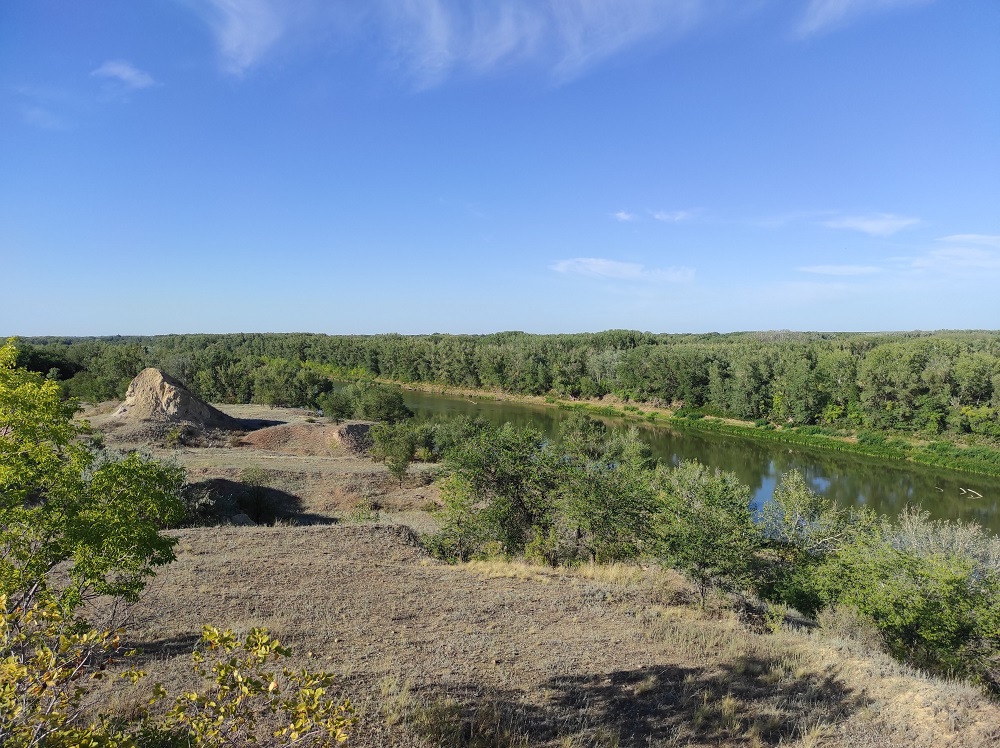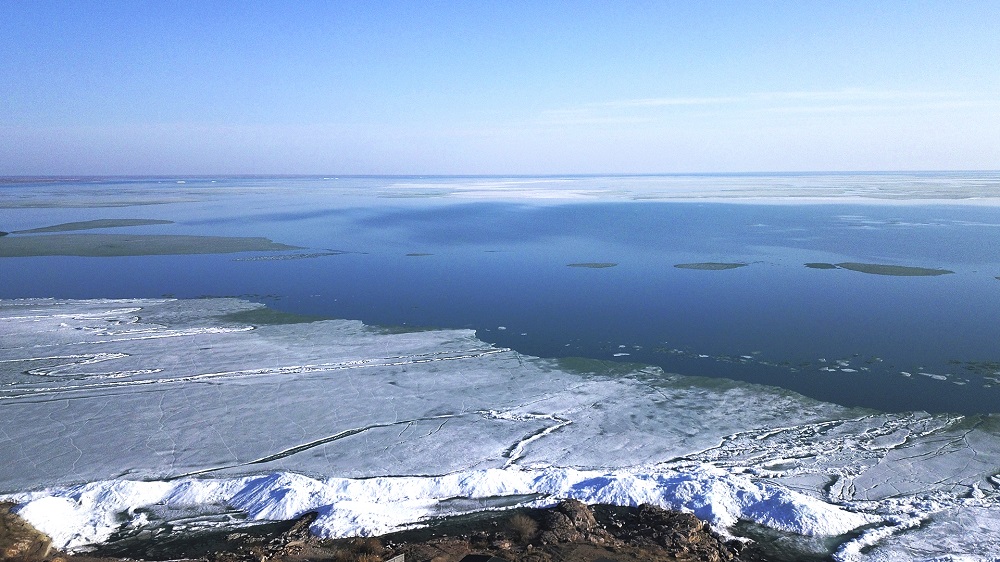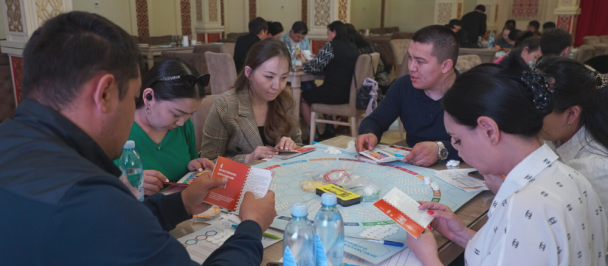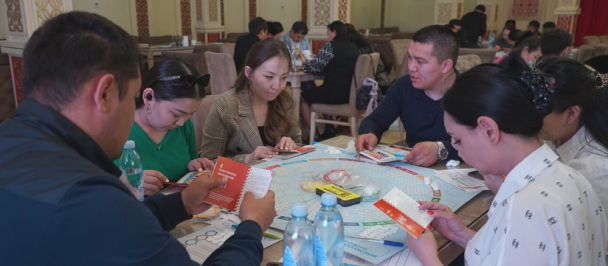Water in all its forms is the primary medium through which climate impacts on humans and nature, on livelihoods and on the well-being of society. The state of water resources directly responds to changes in air temperature and precipitation and their extreme manifestations. Kazakhstan is already beginning to experience shortages of water resources. According to forecasts, by 2040 the country may face significant shortfalls amounting to 50 percent of its needs. Since almost all sectors of the economy depend on water, due to its deficiency in the regions GDP water availability may decrease by 6 percent by 2050.
According to experts, the reasons for the shortage of water resources in Kazakhstan are due to natural conditions (90 percent of river runoff takes place during spring); to the formation of about half of the runoff on the territory of neighbouring countries; and to the extensive use of irrigation water consumption and water losses. Thus, irrigation water productivity in Kazakhstan is six to eight times lower compared to other countries.
More than 44 percent of Kazakhstan’s river flow is formed on the territory of other countries, so the deficit will occur primarily due to intensive water use in neighboring countries. Unfortunately, the extent of Kazakhstan’s own irrational water use is similar to that of other countries. Climate change magnifies its consequence which results in a reduction in the availability of river water. The ramifications are severalfold: the average annual air temperature increases; in winter, the number and duration of thaws increases and the depth of ground freezing decreases, causing melted water to escape into the soil instead of filling the rivers; and a warm spring causes water to evaporate and, instead of pouring into reservoirs, enters the atmosphere. This causes the regimes of rivers to change. We are already seeing the shoaling of such rivers as the Ural (Zhaiyk), Tobol, Ili, Irtysh and Yesil.
For example, the Ural River water level has dropped three times over the last 15 years. Two years ago, the river experienced record shallowing. On 23 August 2019, residents of several districts of Uralsk city woke up without any drinking water supply. The city uses 60 percent of the water from the river and 40 percent from surface water intake. Climate change is not the only reason for the shoaling of the Ural River. The Iriklinskoye reservoir accumulates water from the upper reaches of the Ural River but fails to release it into its lower reaches. Today, there are 12 large water reservoirs in the river basin, in addition to Iriklinskoe, each with at least than 10 million cubic metric volumes of water. Since the Ural is a transboundary river, Kazakhstan and Russia need to cooperate to solve the problem.
At another point, the undrained Lake Balkhash, which depends on the glacier-fed transboundary Ili River for 80 percent of its capacity, is most vulnerable to runoff and climate change. The area and volume of the lake are highly variable experiencing both long-term and short-term fluctuations in water levels. The flow of the Ili River from northwest China has been steadily declining since the 1970s, while the land area for agriculture use and harvesting along the Ili River in China has increased by 30 percent in the past two decades. Intensive water use is also occurring within Kazakhstan. More than 90 percent of the water intake from the Ili River is used for irrigated agriculture, for the Kapchagai Hydroelectric Power Plant and for municipal and industrial water supply.
Since 1970, it took 39 km³ of the river to fill the Kapchagai water reservoir, which led to a two-thirds decrease in the flow and a decrease in the level of the lake. An additional negative environmental impact -- the Balkhash Mining and Metallurgical Plant discharges about 600,000 tons of industrial waste annually, including lead, zinc and copper. Four factors are placing the unique ecosystem of Lake Balkhash under critical threat: increasing demand for water resources in the transboundary Ili-Balkhash basin, increased evaporation due to an arid climate, the rapid melting of glaciers and pollution.
Indeed, glaciers play a critical role in the availability of water resources throughout the year. Even in those river basins where the contribution of water from melting glaciers to runoff does not exceed 5 percent, such water can be very important for irrigation in the summer when precipitation is low. The melting of glaciers is currently compensating for the deficit in river runoff, but as soon as the runoff reaches its peak values by 2030-2050, their water availability is expected to decline. Over the past 60 years, the glaciers of Ile-Alatau and of other outer ranges of the Central Asian mountains have been decreasing at an average rate of 0.73-0.76 percent per year in area and about 1 percent per year in ice volume. If these rates persist, in the future the vast majority of glaciers may completely melt by the end of this century. The Dzungarian glacier system may disappear by 2080, the North-Ileia and Altai glaciers by 2085.
Expert Assessment and Timely Initiatives
In addition, the development of the urban water supply in Kazakhstan has resulted in a serious load on the hydrosphere in the region. For example, the supply of water to the capital, which is growing rapidly, may be limited, because a water shortage up to 75.0 million m³/year is predicted by 2030. Consumption is growing, while simultaneously the water inflow into the Astana (Vyacheslav) reservoir is decreasing.
UNDP experts believe that basin management should be strengthened, including the work of small basin councils, so that they can develop the requisite conditions to implement their decisions and the provisions of basin agreements. Integrated water resources management and the transition to an assessment of the social, economic and ecological value of water resources in the production of goods and services will lead to an increase in the efficient and rational use of natural resources. When making decisions members of the basin councils should take the increasing pressure of climate change on water resources into account.
It is necessary to envisage the implementation of measures to reduce the rate of development of the main water consumers and the use of modern technologies to decrease the consumption fresh water in industry, agriculture and communal services; and also to regulate the water resources available for use by regulating river flows and by the correct territorial distribution of water resources.
It should be noted that UNDP, jointly with its partners, has also developed a series of sectoral checklists to help climate change experts and decision-makers identify water-related issues that need consideration when developing nationally determined contributions under the Paris Agreement. This guidance is available at this link.
Readers are reminded that the delegation of Kazakhstan will participate in the COP 26 United Nations Climate Change Conference from 31 October to 12 November 20201, where a pavilion of the Central Asian Republics will be presented for the first time. Water and climate change are the key priority areas of the global meeting of experts and country leaders.

 Locations
Locations







